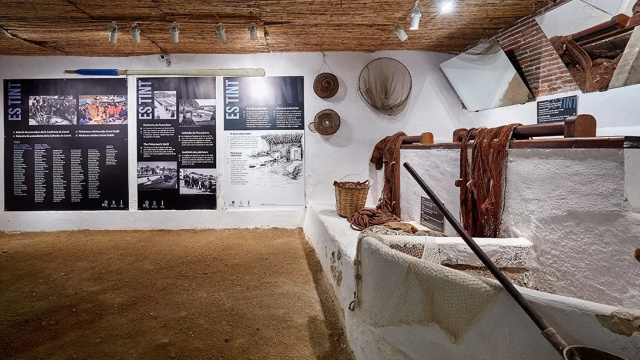MOLL: Lloret Open Museum
Don’t feel like an observer: get to know Lloret’s heritage and get involved.

Es Tint
The current headquarters of the Lloret de Mar Fisherman’s Guild. Located in the town centre, it still serves its original purpose as a space where fishermen go to dye their nets.
Fishing nets were originally made from cotton. Some believed that fish recognised white nets, so they needed to be dyed. This way, they were reinforced and lasted longer.
En Lloret de Mar, this process took place in Es Tint. Water had to be collected from a well and heated. Once the water reached boiling point, crushed pine bark was added. When the bark was mixed in, the water took on a reddish hue and could be used to dye white cotton nets a darker colour.
This is how it was done until the middle of the 20th century, when nylon nets came into use. Little by little, Es Tint fell into disuse.
















